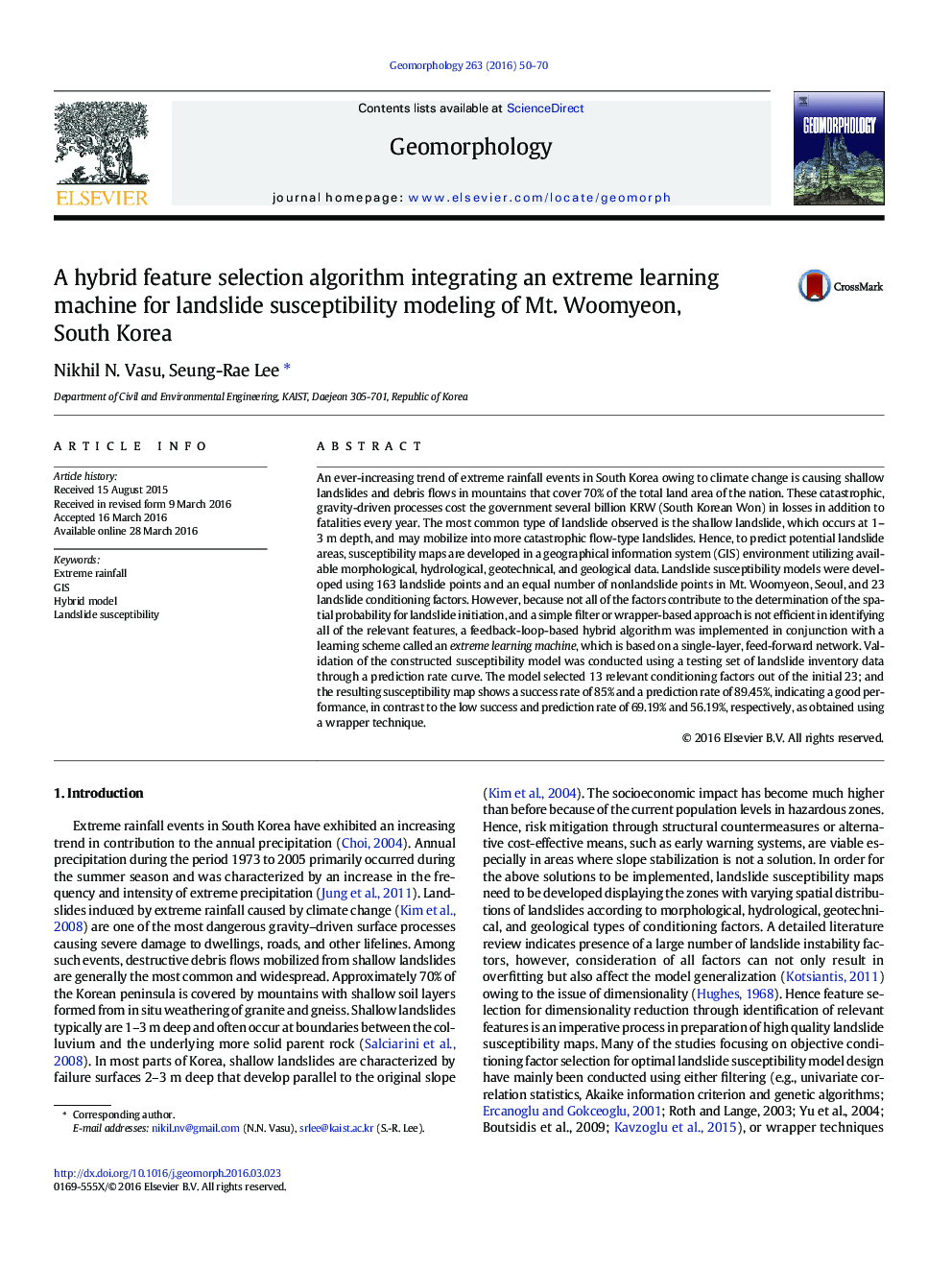| کد مقاله | کد نشریه | سال انتشار | مقاله انگلیسی | نسخه تمام متن |
|---|---|---|---|---|
| 4684030 | 1635386 | 2016 | 21 صفحه PDF | دانلود رایگان |

An ever-increasing trend of extreme rainfall events in South Korea owing to climate change is causing shallow landslides and debris flows in mountains that cover 70% of the total land area of the nation. These catastrophic, gravity-driven processes cost the government several billion KRW (South Korean Won) in losses in addition to fatalities every year. The most common type of landslide observed is the shallow landslide, which occurs at 1–3 m depth, and may mobilize into more catastrophic flow-type landslides. Hence, to predict potential landslide areas, susceptibility maps are developed in a geographical information system (GIS) environment utilizing available morphological, hydrological, geotechnical, and geological data. Landslide susceptibility models were developed using 163 landslide points and an equal number of nonlandslide points in Mt. Woomyeon, Seoul, and 23 landslide conditioning factors. However, because not all of the factors contribute to the determination of the spatial probability for landslide initiation, and a simple filter or wrapper-based approach is not efficient in identifying all of the relevant features, a feedback-loop-based hybrid algorithm was implemented in conjunction with a learning scheme called an extreme learning machine, which is based on a single-layer, feed-forward network. Validation of the constructed susceptibility model was conducted using a testing set of landslide inventory data through a prediction rate curve. The model selected 13 relevant conditioning factors out of the initial 23; and the resulting susceptibility map shows a success rate of 85% and a prediction rate of 89.45%, indicating a good performance, in contrast to the low success and prediction rate of 69.19% and 56.19%, respectively, as obtained using a wrapper technique.
Journal: Geomorphology - Volume 263, 15 June 2016, Pages 50–70